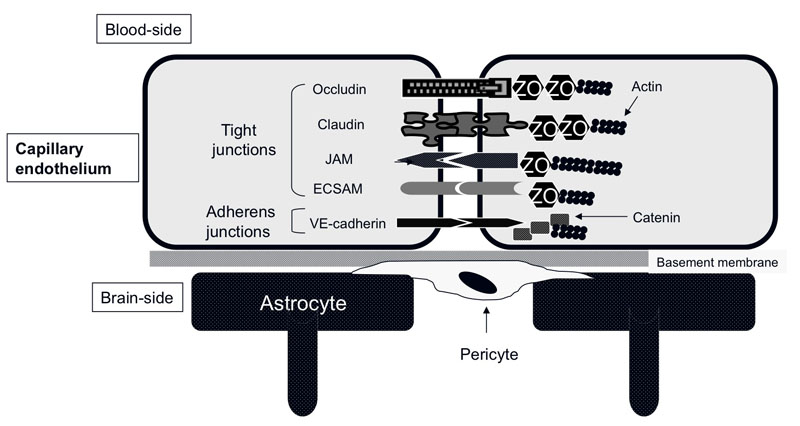Acanthamoeba: Biology and Pathogenesis
|
Author: Naveed Khan Published: 2009 ISBN: 978-1-904455-43-1 Everything that is known about Acanthamoeba is critically reviewed and divided into easy-to-follow sections. The current state of research on genomics, molecular and cellular biology, life cycles, geographical distribution, role in ecosystem, morphology, motility, phylogenetics, genotyping, metabolism, regulation of morphogenesis, host-parasite interactions, the molecular and immunological basis of pathogenesis, methods of transmission, epidemiology, clinical manifestation, diagnosis, treatment, new target development and drug resistance, and much more. read more ... |
Figure from: Acanthamoeba Biology and Pathogenesis
Full details of this book at Acanthamoeba. More figures at Acanthamoeba Figures.

Section D. Figure 6. Schematic illustration of the blood-brain barrier at the cerebral capillary endothelium exhibiting tight junctions. The endothelial cells are surrounded by basement membrane, which is ensheathed by astrocytes and pericytes. The tight junctions are composed of integral proteins including occludin, claudin, junctional adhesion molecule (JAM), and endothelial cell-selective adhesion molecule (ECSAM), that interact with their counterparts on the adjacent endothelial cells. Both tight junctions and adherens junctions are composed of multiple proteins. The cytoplasmic tails of these proteins interact with the actin cytoskeleton via a number of accessory proteins including members of zonula-occludens (ZO).
Further reading at Acanthamoeba. More figures at Acanthamoeba Figures.



